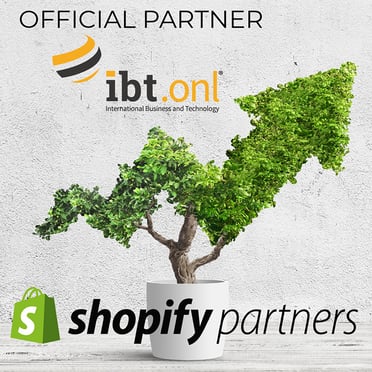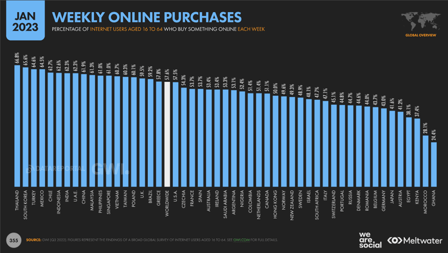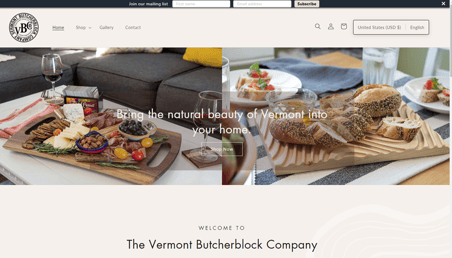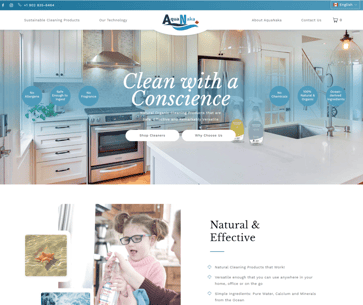 In most countries, more than half of internet users buy online at least once a week. In Canada, 51% shop online while in the USA it is 57%, and in places like Thailand, Mexico, Singapore, it is well above 60%. In this blog we look at how companies can leverage ecommerce platform Shopify to grow their brands and sales internationally.
In most countries, more than half of internet users buy online at least once a week. In Canada, 51% shop online while in the USA it is 57%, and in places like Thailand, Mexico, Singapore, it is well above 60%. In this blog we look at how companies can leverage ecommerce platform Shopify to grow their brands and sales internationally.
Going global poses specific challenges beyond the obvious logistic issues: how does your international buyer persona find you and how do you engage and create the buying experience needed to ensure carts go right through to the purchase across different markets?
Going global means going local: maximising Shopify’s capabilities, combined with precision online marketing and local market expertise, ensures your brand is easy to find, connects with your local buyer persona and builds the trust you need to get purchases over the payment line.
As an official Shopify Partner, IBT Online helps our clients leverage Shopify to go global - read on to see how.

Get the Basics in Place First
Experienced ecommerce businesses know that commercial success is built on the right preparation. Before launching in any new market, make sure the building blocks are in place. This means ensuring your Shopify is configured for multiple markets. Some of the key concerns we see are:
- Logistics: Enable Shopify’s shipping settings for global shipping options. You can configure the logistics and fulfilment methods to cater to different countries.
- Compliance: New markets means new regulations, not just for your product but also for your online footprint. From GDPR in Europe and Canada’s Anti-Spam regulations, to Japan’s APPI, data protection is a growing global trend.
- Currencies and payment: Shopify offers multiple currency options but beware that conversion rates and exchange fees can impact your pricing and profitability. In addition, make sure your preferred payment gateway functions in the target markets.
The Vermont Butcher Block, which sells into the USA and to Quebec, for example, makes it easy for customers to toggle between Canadian $ or U.S. $ and English or French for a better user experience.

From Local Hero to Global Player
Understanding and connecting with your international buyer persona is key to successfully expanding your business into global markets. This is at the heart of localizing your content so that your prospective buyer finds you, engages with you and builds the trust needed to purchase. Over time, this process is what builds solid brand awareness and brand loyalty within your community.
Localizing content goes far beyond translating words. It includes customizing your Shopify theme to appeal to international audiences, taking into account cultural differences and preferences. While Shopify apps can help automate translations of product descriptions and policies, your Shopify website still needs to be optimized for international SEO. The main elements for optimization are keyword research, meta tags, URLs and hreflangs to indicate language and regional settings for the search engines.
Design and the Shopify theme you use, is just as important, not only for the user experience but also to build brand awareness by reflecting your core values. The screen shot below comes from Canadian company AquaNaka (https://aquanaka.ca/) who wanted a Shopify website to reflect their values of sustainability, environment-friendly and family-focused products. At the same time, users can easily find products and navigate the shop:
Interested in learning more? Hear it direct from our clients!
Rise Above the Rest: Why online marketing is essential for ecommerce success
The ecommerce landscape is competitive and success relies on consistent, best-practice and innovative online marketing. This is especially true for growing your international sales as your brand may have less visibility in your export markets. Through tactics like search engine optimization (SEO), content marketing and social media advertising, you can effectively reach and engage with your target audience, wherever they may be.
 Using advanced targeting capabilities offered by platforms like social media ads and pay-per-click (PPC) campaigns, you can narrow down your audience based on demographics, interests, and behaviour. This enables you to direct your marketing efforts towards those most likely to convert into customers. Being visible across the online channels of your prospective international buyer, means you reach the right people at the time they chose on the platform of their choice.
Using advanced targeting capabilities offered by platforms like social media ads and pay-per-click (PPC) campaigns, you can narrow down your audience based on demographics, interests, and behaviour. This enables you to direct your marketing efforts towards those most likely to convert into customers. Being visible across the online channels of your prospective international buyer, means you reach the right people at the time they chose on the platform of their choice.
Social listening is key to understanding your new export market. Monitoring social media platforms and online forums in your target markets, gives you a deeper understanding of conversations and trends. We use social listening tools to track mentions of our clients’ brands as well as industry-related trends and interests across their international markets. Over time, this improves a brand’s ability to effectively connect with their community and build stronger relationships. By fostering meaningful connections, you can cultivate customer loyalty and drive repeat purchases, ultimately boosting your ecommerce success.
One example is Wind River Chimes a U.S. maker of hand-tuned, handcrafted wind chimes that now sells internationally – check out their European websites as an example: https://windriverchimes.fr/. Navigating to the shop and purchasing is easy but the user experience and brand loyalty are enhanced by the resources and client-focused material. From guides on how to choose, to online listening of their windchime collections , the website is focused on building long-term brand loyalty to their high-quality products. Social media is leveraged to help their customers find the chimes they are looking for:
.png?width=383&height=210&name=Untitled%20design%20(6).png)
Digital Footprints, Tangible Results: tracking your ROI
Measuring return on investment (ROI) on Shopify is essential to assess the effectiveness and profitability of your ecommerce efforts and assessing if your marketing is working hard for you. IBT Online’s process involves full-scale tracking for our clients’ websites, with clear-set goals and Key Performance Indicators (KPIs) that align with the client’s business objectives. The pleasure of ecommerce is that the first KPI is easy to measure: tracking revenue and sales. Shopify provides built-in analytics that track your store's performance, including total sales, average order value, and conversion rates, but the analysis is what counts.
Other key metrics could include Customer Acquisition Costs (CAC). By comparing your CAC to the lifetime value of a customer, you can determine the ROI of the acquisition efforts. We also focus on boosting ROI through improving Average Order Value (AOV) and conversion rates, where we typically measuring conversion rates for different stages of the customer journey, such as add-to-cart, checkout, and purchase. For long term brand awareness, Customer Lifetime Value (CLTV) can be used. This quantifies the total value a customer brings to your business over their lifetime, tracking factors such as repeat purchases, average order frequency, and customer retention rates.

In summary, IBT Online works with our clients to build their brands and grow their Shopify business internationally. As an official Shopify Partner, our expertise in international markets, localization and digital marketing helps our clients grow their exports, sales, brand and business in their target international markets. Go global – go local.
Want to learn more? Check out our ecommerce page on our website
